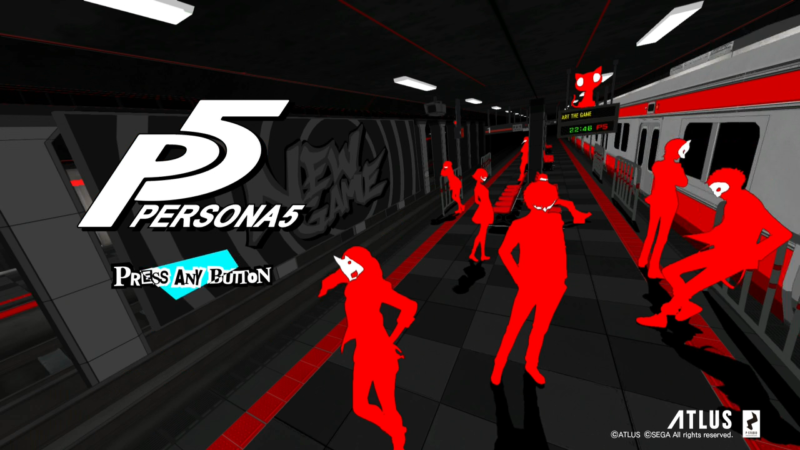Persona is a special series for a multitude of reasons. For one it started as a branch of the Shin Megami Tensei series of RPG’s made by Atlus but proved so popular that it eventually dropped the Shin Megami Tensei from its title. Persona also has proved incredibly popular in Japan, even beating out Square Enix JRPG giant, Final Fantasy. Persona 3 was my first encounter with the series, and it was love at first site. I played the PSP version, Persona 3 Portable on a co-workers recommendation. In no time I had moved on to the PS Vita version of the fourth game in the series Persona 4 Golden, which still holds a cherished spot as one of my favorite games of all time. So naturally, Persona 5 had been on my radar for a long time. I even considered importing a copy early; the fact that I wouldn’t be able to understand Japanese wasn’t going to stop me. So does the fifth installment land? The quick answer is yes. While it isn’t perfect Persona 5 is a fantastic step forward, and has every bit of the dungeon crawling and teenage angst the players go to the series for.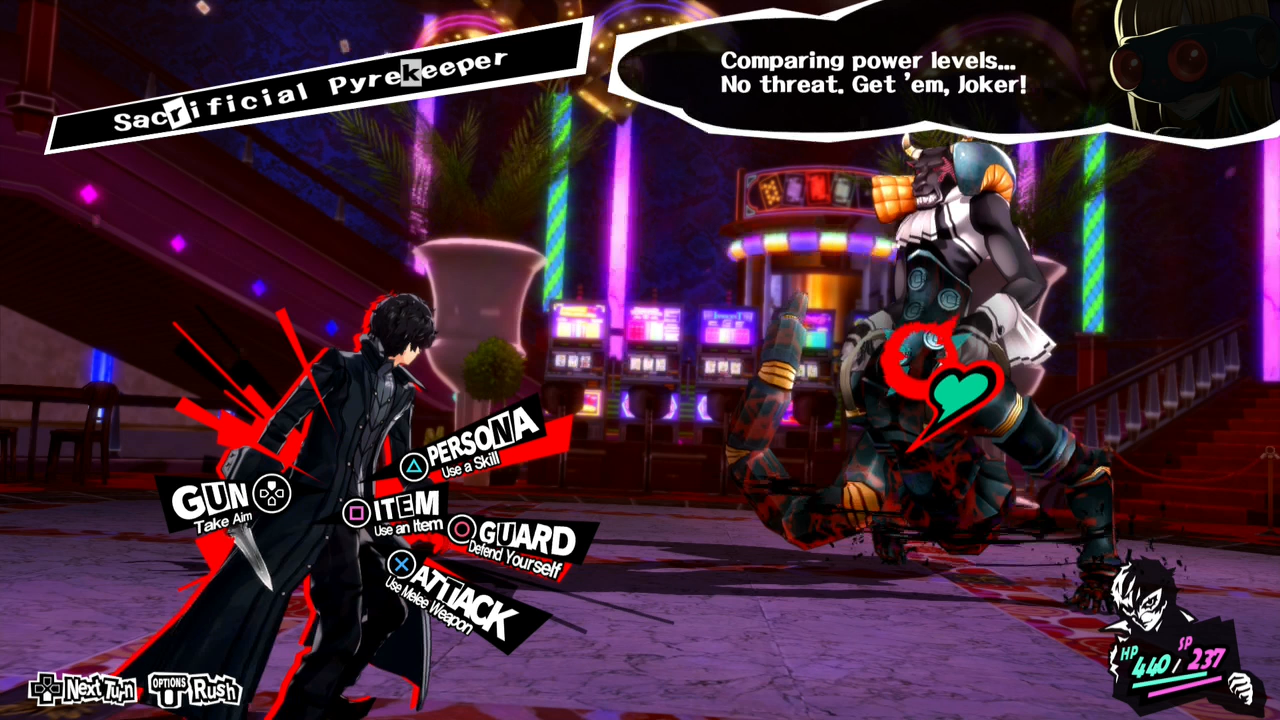
For anyone new to the series Persona has a pretty simple formula. A teenage protagonist moves to a new town, in this case, the Shibuya ward of Tokyo. During the day you’ll build relationships, called Confidants in Persona 5 with people you meet by hanging out with them. Think of each Confidant as its own little story line. At night the main character and other supporting characters will crawl through dungeons and fight monsters using a physical manifestation of their true selves known as Personas. Every Persona in the game is represented by a tarot card arcana, Lovers, Chariot, etc. The main character is special though, as he represents the Wildcard arcana. What this means is unlike other characters the main character can wield multiple Personas by fusing them together in the Velvet Room.
The Velvet Room, of course, is a special place where fusion, as well as other Persona-related services, are handled by Igor and his assistant’s, twins named Justine and Caroline. Igor has been in every Persona game since the start he’s had a new attendant in each game since Persona 3. This mysterious old man will handle all Persona fusion as well as keep a compendium of every Persona you’ve ever created. The Compendium can be used to summon them for cost depending on the Persona itself. In every Persona game, the Velvet Room takes on a new appearance. In Persona 5 the Velvet Room is a prison, as such, you’re confined to a cell while there.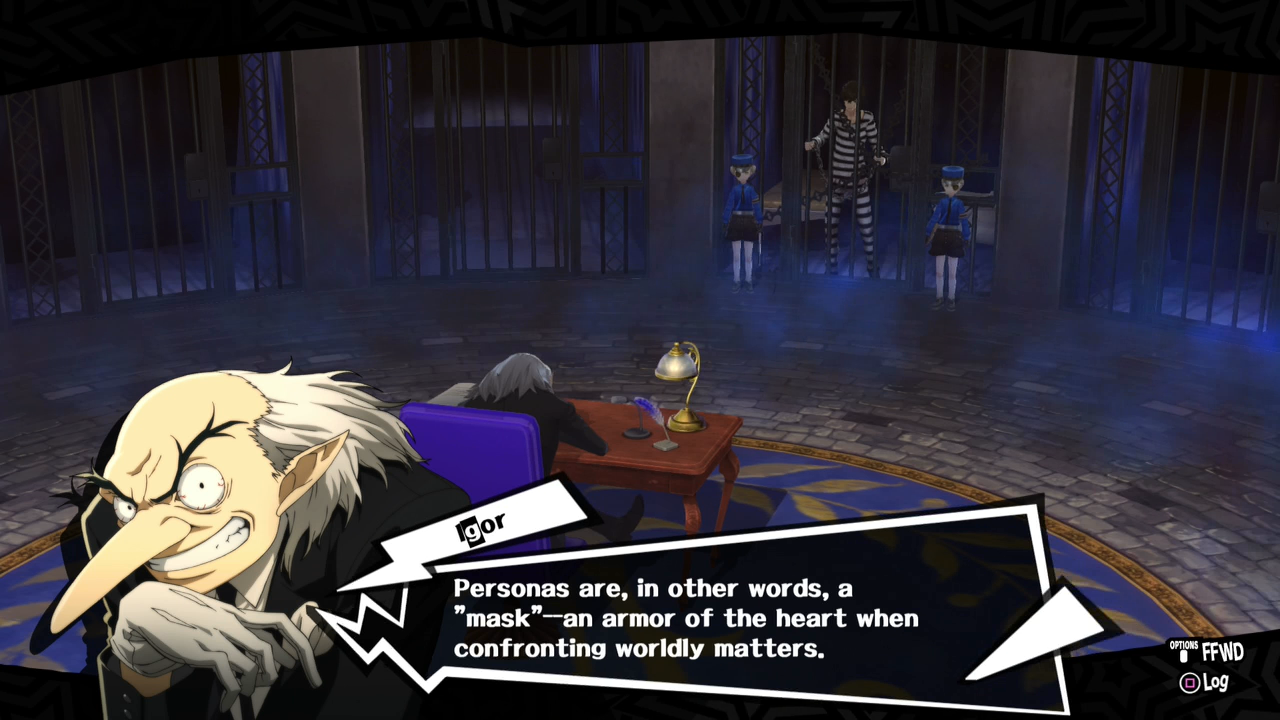
Persona 5’s story is long, around 90 to 100 hours start to finish. It’s also amazing, so I’ll do my best to give you an idea without spoiling too much. At the start of the game, you find the main protagonist, cannon name Akira Kurusu if you’re a nerd like me, attempting to escape from some sort of casino heist. Spoiler alert, you get caught. At this point Persona 5 introduces its framing device, you’ll flash back from the interrogation room as Prosecutor Sae Nijima asks you about how it came to this, and you tell all on how the mysterious Phantom Thieves were born. Akira was sent to live in Tokyo under the guardianship of Sojiro Sakura, a cafe owner who initially seems less than thrilled to have you. You’ll live above his shop for a year while you’re on probation. Akira was charged with assault after attempting to save a woman from being attacked. The man doing the assaulting in question filed the suit, that’s right, you’re life was ruined from stopping a possible rape, and everyone seems to think you’re a jerk for it.

So dungeons, called Palaces in Persona 5 are what advances the plot in the biggest way. You’ll be in Tokyo for a year, so you’ll have to manage when to hang with friends, work on increasing social stats like Knowledge and charm or when to visit the Palace. The premise of each dungeon is simple, steal a treasure contained within. You see each Palace is a physical manifestation of someone’s twisted desires. The protagonist and his Phantom thieves steal the physical manifestation of these twisted desires and cause said person to have a change of heart and confess to their crimes. While in the Palace each party member takes on a new appearance and codename as a Phantom Thief, and summons his or her Persona by ripping off their mask.
You’ve heard me mention heists and Phantom thieves multiple times because they’re both important parts of Persona 5 and its Palace’s. When you enter a Palace, you’re in thief mode. That means now more than ever stealth approach is critical. Now Persona is far from a stealth game, but you can take cover in an attempt to sneak around and catch your enemy by surprise. Doing so will result in an ambush giving you a leg up in combat. As further incentive, every time an enemy spots you the Palace’s alert meter will rise, if that meter reaches 100% the ruler becomes aware of your presence, and you’ll be forced out.
Persona 5 uses turn based combat as did its predecessor’s but brings back a lot of things absent in the past two installments. The flow of combat is easy enough to wrap your head around. It’s all about strengths and weaknesses. Persona shares the same elemental attack names as Shin Megami Tensei, Garu skills are wind-based Agi is Fire and Bufu is ice just to name some basics. The fastest path to victory is through exploiting weaknesses. Attacking any enemy with an element they are weak to will knock them down, in past Persona titles knocking down all foes resulted in an all out attack which deals massive damage, often leading to the enemy’s defeat. While all out attack is an option in Persona 5, you can also negotiate with enemies. You can convince them to join your party as a Persona or even give you some money and go about their day. Here’s thirty bucks, now leave me alone.
A few ideas from Shin Megami Tensei besides these enemy negotiations have crept back into Persona proper. For one elements like Frei, a nuclear-based attack, and Psio, a psychic one are present for the first time since Persona 2. Guns, which have also been gone from the series since Persona 2 are here as well. Guns simply act as another element on Persona’s wheel but have limited ammo that refills when you leave a Palace.
Fighting off shadows may be one of the most enjoyable experiences in Persona, but social experiences are just as fun. Something about all that Japanese high school drama will always pull you back, and getting a grasp on how to properly manage your time constantly keeps you on edge. “Maybe I should go to the Palace tonight, but finals start tomorrow, and I need to study.” These and other strange thoughts kept me awake at night during my two weeks with Persona 5. Unlocking new abilities and other benefits by getting the most out of your relationships with party members and others can often turn the tide in battle, so don’t pass up getting ramen with Ryuji.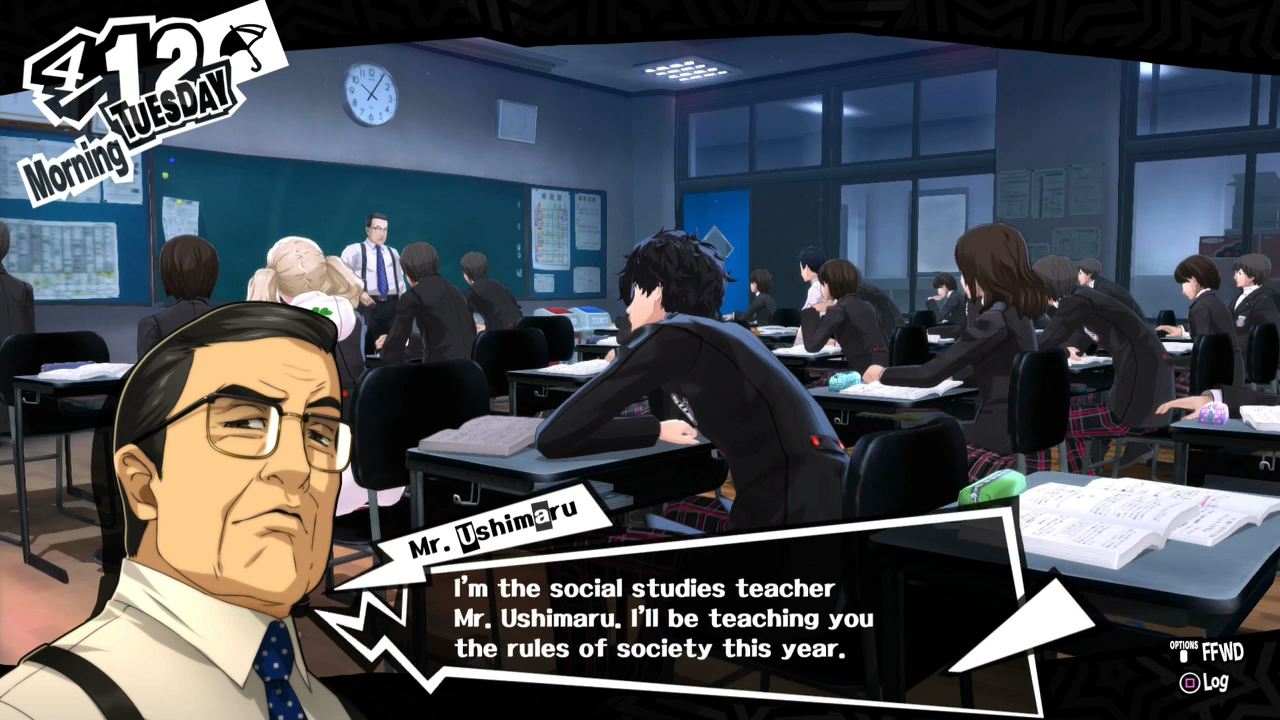
The protagonist also has five stats that only have effect in social situations. Knowledge, Proficiency, Guts, Charm, and Kindness. Doing certain activities can raise these stats, for example, answering a question correctly in class improves your knowledge while going to see a scary movie may improve your guts. These stats are important because they serve as roadblocks in Confidant links. If you don’t have the Kindness to talk to Ann about what’s bothering her the two of you will never get closer.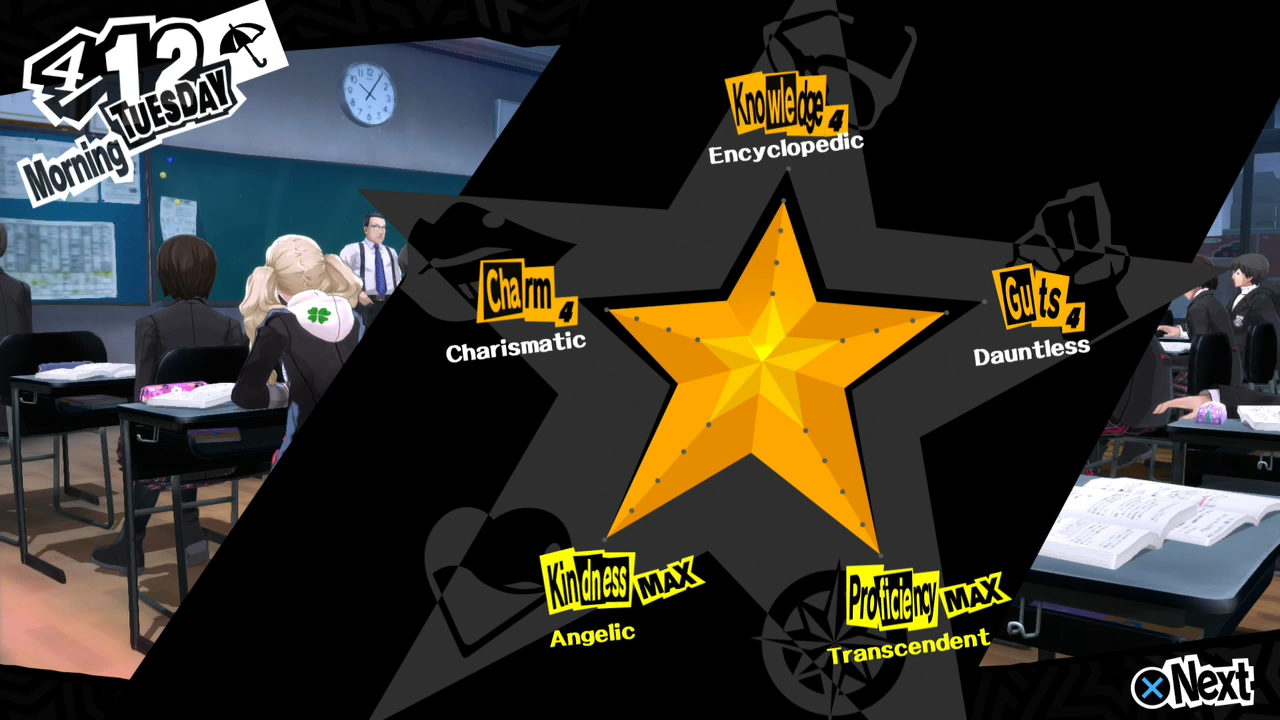
Let’s take a minute to talk about the insane style oozing from Persona 5. Over the top style has always been a selling point of the Persona series but 5 is something else. From its catchy J-pop soundtrack to the crazy colorful menus everything in this game will grab your eye. Bright colors contrasted against the dark shadow world make the characters, and their abilities pop. For players who love past Persona titles, you can pick up a ton of costumes as DLC from past games. Not only do these costumes change the party’s look, they’ll also change the battle music to that of the Persona or Shin Megami Tensei game in question.
Persona 5 is the first game in the long-running franchise that you might consider a triple A title. Everyone is talking about the game that started as a rather niche JRPG series. It’s also clear that Atlus made a Persona more catered to a mainstream audience. This becomes most clear through how much Persona 5 tries to hold the player’s hand. One of my favorite things about Persona 4 was figuring out all the amazing things you can do, activities are just as plentiful in Persona 5, but the game spends a whole lot of time explaining them to you. Persona 4 trusted its players more, and there’s something to be said for that. Also if that cat keeps telling me to go to bed I may just lose it, I’m a grown up Morgana, I set my own bedtime.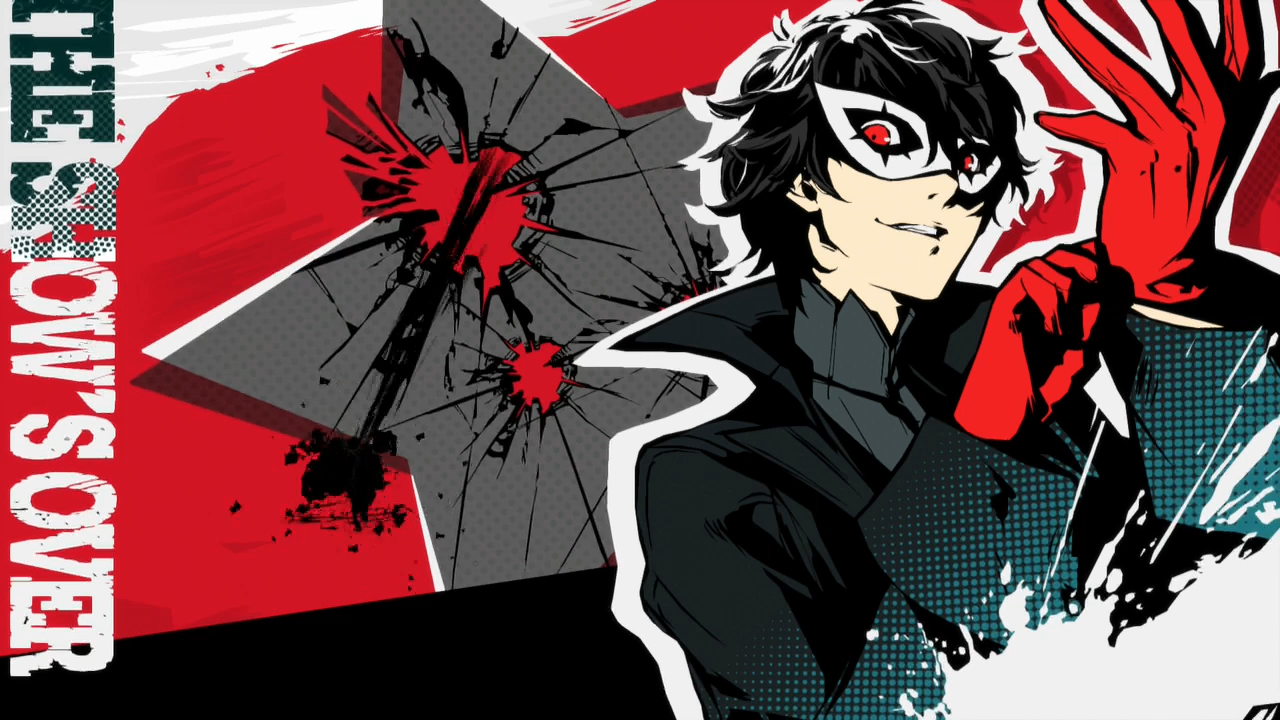
Persona 5’s localization is a bit rough, to say the least. For the most part character conversation, particularly those between the main cast, are solid, the English voice actors even sound pretty good, with the exception of a few horribly mispronounced last names. Conversations carried out by a number of the world’s adults, particularly those with the protagonist are pretty bad though. Maybe it all has to do with the way an angsty teen would view adults but it seems like some of the dialogue was written by some adults who had never spoken to a 17-year-old in their lives. Rough localization was actually part of past games in the series charm, but with how finely tuned Persona 5 is it seems out of place.
Persona 5’s New game plus also has a whole lot of value to dedicated players. Once you’ve finished the game you can start a new game plus that carries over your money, equipment, compendium and even more. Persona games typically have multiple endings so it may be worth the close to 200 hour time sink in order to see it all.
